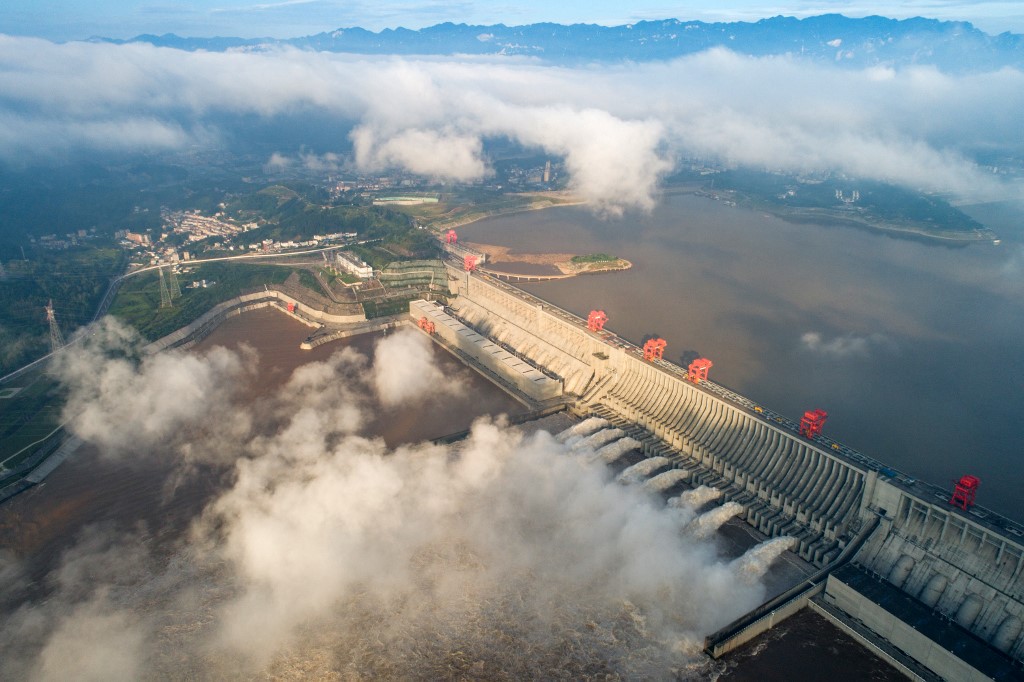Some 97 rivers have already exceeded warning levels and the wet season is only just beginning; weather forecasters say seven river basins are likely to see flooding and Guangdong Province faces storms set to bring days of heavy rain
(AF) China is bracing for another historic flood season, following extreme flooding last year which caused chaos throughout the economy and society.
The Global Times reported five days ago that 97 rivers had already exceeded warning levels and that the country was likely to see flooding in seven major river basins.
Rivers in parts of southern China were experiencing record highs and rain over coming weeks was expected to make them rise further, the paper said.
“Along the Yangtze River basin, 47 reservoirs have been prepared to relieve floods, with a total flood control capacity of 69.5 billion cubic metres. Most of these reservoirs have been discharged to full levels,” Wang Wei, an official with the Ministry of Water Resources’ flood and drought disaster prevention office, told state broadcaster China Central Television (CCTV), it said.
The paper urged citizens not to believe the ‘hype’ of western media reports suggesting that the Three Gorges Dam was ‘deformed’. It quoted an official saying “the public should have confidence in China’s flood control capabilities. No need to worry over such baseless theories. The dam weathered a deluge of over 70,000 cubic metres per second previously, and it has leeway to deal with even greater flooding.
“This year’s rainy season has come earlier than usual but it is still within the normal range. Last year, China recorded record heavy rainfall, so the chance of this year being the same is low, but extreme weather is unpredictable due to the impact of global warming,” Cheng Xiaotao, the former head for the Institute of Flood Control and Disaster Reduction, with the China Institute of Water Resources and Hydropower Research, was quoted as saying.
Poyang Lake – which suffered unprecedented floods last year, with water levels over the 22.5-metre record set in 1998 – was likely to have water above the warning level, CCTV reported late last week. Poyang Lake, in eastern Jiangxi Province, is the country’s largest freshwater lake.
‘Super-alarm’ flood alert in south
The Ministry of Water Resources said that starting from today, June 1, China will enter the main flood season with many rivers in the south already flooding. Indeed, the ministry said police and emergency services were overwhelmed in some areas.
It said heavy rainfall would hit the southern part of the country from today until June 4.
A ‘super-alarm’ flood alert was issued for the Xiangjiang River in Hunan, the Xinjiang River in Jiangxi, the Jianxi and Futun Rivers in Fujian Province, and Guijiang River in Guangxi, as all are expect to receive heavy rain.
Larger floods may occur in some small and medium-sized rivers between the rivers named here, the warning said.
Meanwhile, a red rainstorm warning has been issued for Guangdong, which has led to classes being suspended in the southern province for many school students.
The weather station has forecast heavy rain in Guangdong over the next five days. When thunderstorms are accompanied by short-term heavy precipitation, strong convective weather such as short-term strong winds at local level 8 are expected, as Typhoon 3 and possibly 4 batter the area.
June 1 is the start of what could be another inauspicious wet season in China. But as yet the Three Gorges Dam catchment area has not been affected and officials are hurriedly draining the 600km catchment zone. The water level in the dam has been reduced to 150 metres.
After massive floods in the Yangtze and other river basins, officials in China have begun to realise that the country’s massive CO2 output – far in excess of any other country – from its dependence on coal power is causing disastrous climatic impacts.
Last year’s flooding was estimated to have caused economic damage of more than $20 billion. However, some analysts say that figure was likely an underestimate of the damage caused to a whole range of sectors such as agriculture, food production and logistics.
In March, the head of the central bank warned that climate change poses a threat to the country’s financial stability. This has led to plans to diversify energy sources, ramping up renewable sources such as wind, solar and hydrogen power sources.
























